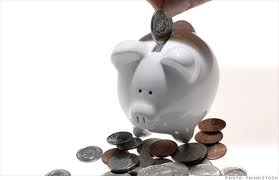One of the fastest ways to increase the level of money in our pockets and hence the ability to save more is by reducing the amount of debt that we currently hold. We may have accumulated this debt in the past due to the tendency to spend more, as a result of necessity or continue to add on debt consequential of our adopted lifestyles. Debt reduces our available income in the short term usually because we have to service it on a monthly basis, be it credit card, consumer loan or mortgage. In the long term we pay a lot more money in interest than the amount of principle debt itself, particularly in our country where interest rates have remained relatively high.For example if you have taken out a 10 year loan at an interest cost of 20% per annum, in simple terms it means that every 5 years you will have paid the same amount of the principle loan in interest ( 20% X 5 = 100%). So if you only keep the loan for the full term i.e. 10 years you will have paid back the principle as well as almost two times the amount of the principle in interest.
Like with any problem, the first step towards getting out of it is a change in behaviour. The debt cycle needs to be broken. Simply put it means stop spending the money that you do not have. One of the fastest ways to curb debt is via elimination of the credit card. Stop whipping out the fancy gold card and pay cash or use a debit card which impacts your bank account immediately. The next is halt new unnecessary loans particularly consumer loans. Just because a lender is willing to approve a loan does not necessarily mean that you have to take it. The other behavioural change is to stop correlating an increase in income with an equivalent increase in immediate expenditure. We tend to immediately see how we can spend more rather than how we can delay our current spending, save more so that we can be able to spend in the future.
Secondly, if you can, pay out more than the required minimum amount per month. Work with a budget and realistically see how much you can allocate towards reduction of debt. Over the long term you will end up paying much less in interest costs to the banks or financial providers. It is always prudent to start with the most expensive debt first. For example you may have a mortgage that you are currently paying out 15% per annum whilst you have a credit card balance charging you 3% per month which is effectively 36% per annum. It makes sense to pay out the credit card first. Always make it clear to the lender that the additional payments are to be credited towards reducing the principle and not credited towards the interest. Reduction of the principle amount also reduces the amount that is payable per month. This means if you have a bad month e.g. an emergency arises e.g. medical, your monthly debt repayment is already much less enabling you to divert funds towards the emergency.
Lastly evaluate Good Debt versus Bad Debt. In most cases the rule of thumb is to get rid of the bad debt first. Bad debt is bound to have no long term benefits to you such as a consumer loan to buy furniture. It is also usually the more expensive debt. As much as the furniture looks good in your living room, it is not appreciating in value and cannot be considered to be a source of income. Good debt has a long term benefit to you and that benefit has some monetary value e.g. a business loan, mortgage taken out on to buy a house or to take a course. The loan may enable the business to increase its income, the house is appreciating in value and can be rented or sold if need be and the course has armed you with certain skills needed to earn more money or get a promotion. All these will enhance your ability to save.
A common debate is whether to save more or reduce your debt. There is no right or wrong to this answer as it is dependant on the circumstances. If the debt is costing you more than the interest or benefit earned on savings, than you should endeavour to reduce the debt. If there is an opportunity to invest whereby you will earn more than the cost of the debt, than you can save more. For example if you have credit card debt of Kes 10,000 at 36% p.a. and have Kes 10,000 that you can put in a savings account earning 5% p.a, than you should reduce the debt. This is however easier said than done as many people feel better even though they have bad debt when they have a healthy savings account. One of the psychological reasons for this is referred to as ‘mental accounting’ whereby different meanings are placed on different accounts instead of looking at the overall financial picture as one. The reality is that at times hanging on to debt will negate any investment gains.
The moral of the story is that debt, especially bad debt, can be very costly. It will not only reduce your ability to save in the short term but in the long term as well when your potential to earn income may be reduced. Taking charge of your debts now can be key for strong financial progress for years to come.
Written by Waceke Nduati Omanga

